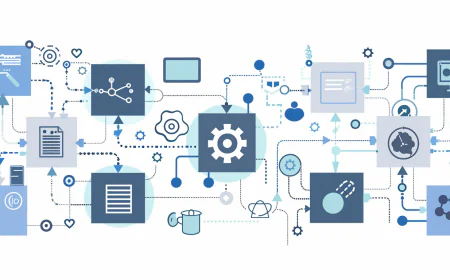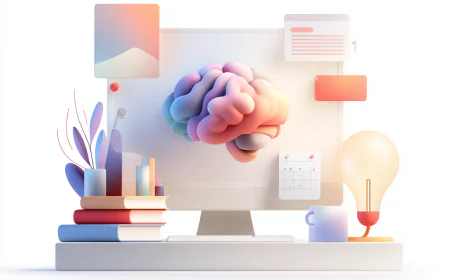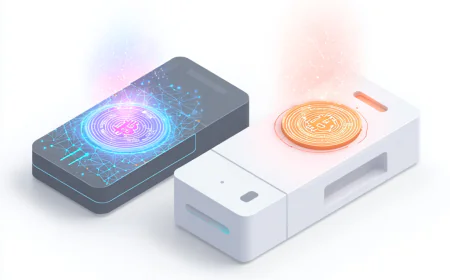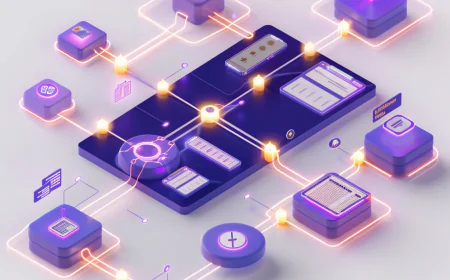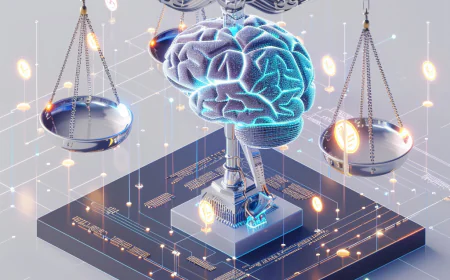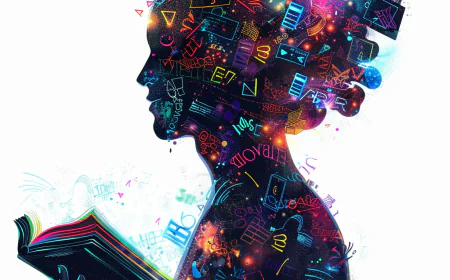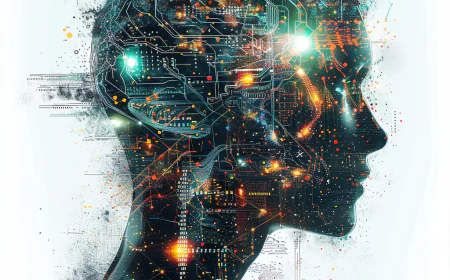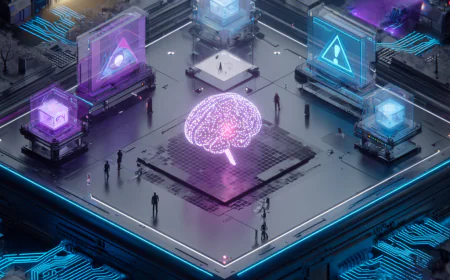ChatGPT Masterclass: How to Master OpenAI's Revolutionary AI Assistant for Maximum Productivity
Discover how to master ChatGPT with this comprehensive guide. Learn advanced prompting, multimodal capabilities, enterprise deployment, and automation workflows to boost productivity and innovation in 2025. Perfect for professionals and organizations aiming to leverage AI for competitive advantage.

With the introduction of GPT-5 in August 2025, ChatGPT has set a new benchmark in advanced reasoning, enabling it to tackle complex problems with unprecedented accuracy and depth. This section explores how to leverage these reasoning capabilities to solve intricate challenges across various domains, from strategic business decisions to scientific research.
Understanding GPT-5's Reasoning Engine
GPT-5's reasoning capabilities are powered by its advanced thinking mode, which allows the model to break down complex problems into manageable steps, evaluate multiple perspectives, and deliver reasoned conclusions. Unlike previous models, GPT-5 can automatically switch between conversational and thinking modes based on the complexity of the query, ensuring optimal performance.
Key Features of GPT-5 Reasoning:
- Step-by-Step Problem Solving: Breaks down complex queries into logical steps, showing intermediate reasoning for transparency.
- Multi-Perspective Analysis: Evaluates problems from multiple angles to provide balanced insights.
- Confidence Scoring: Assigns confidence levels to outputs, helping users assess reliability.
- Error Correction: Identifies and corrects potential errors in reasoning, reducing inaccuracies by 45% compared to GPT-4o.
- Dynamic Contextual Adaptation: Adjusts reasoning based on new information provided during interactions.
Practical Applications of Advanced Reasoning
GPT-5's reasoning capabilities are particularly valuable in scenarios requiring deep analysis, such as strategic planning, scientific research, and technical problem-solving. Below are some practical use cases and optimized prompts to harness these capabilities.
Strategic Business Planning:
"As a strategic consultant with expertise in market expansion, analyze the feasibility of entering the Southeast Asian market for a SaaS company specializing in CRM solutions. Perform a step-by-step analysis: 1. Assess market size and growth potential using current data. 2. Evaluate competitive landscape and key differentiators. 3. Identify regulatory and cultural barriers. 4. Propose a go-to-market strategy with timelines and milestones. 5. Provide risk assessments with mitigation strategies. Show your reasoning for each step and assign confidence scores to your conclusions."
Scientific Research Synthesis:
"Act as a research scientist specializing in renewable energy. Synthesize recent studies on solar panel efficiency improvements published in 2025. Perform the following: 1. Summarize key findings from at least five peer-reviewed studies. 2. Identify common trends and contradictions in the research. 3. Propose a hypothesis for further investigation based on gaps in the literature. 4. Suggest experimental designs to test the hypothesis. Include citations and confidence scores for each recommendation."
Optimizing Reasoning Mode Prompts
To maximize the effectiveness of GPT-5's reasoning mode, follow these best practices:
- Specify Reasoning Steps: Clearly outline the steps you want the model to follow to ensure structured outputs.
- Request Confidence Scores: Ask for confidence levels to gauge the reliability of the response.
- Provide Contextual Constraints: Include relevant constraints, such as timeframes, budgets, or data sources, to focus the reasoning process.
- Iterate and Refine: Use iterative prompting to refine outputs based on initial responses.
Iterative Refinement Example:
"I received your analysis of our marketing campaign performance, but the ROI projections seem optimistic. Re-evaluate the projections using conservative assumptions for conversion rates (2-3%) and customer acquisition costs ($50-$75). Show your revised reasoning and explain how you adjusted the model."
Part 12: Mastering ChatGPT for Creative Industries
ChatGPT's multimodal capabilities, particularly with GPT-4o and GPT-5, have transformed its utility in creative industries such as design, filmmaking, writing, and marketing. This section explores how to leverage these tools for creative excellence.
Creative Writing with ChatGPT
ChatGPT can serve as a co-writer, editor, or brainstorming partner for creative writing projects, from novels to marketing copy. Its advanced aesthetic sensibility and ability to mimic specific styles make it a powerful tool for writers.
Creative Writing Prompt Example:
"Act as a bestselling sci-fi author. Write the opening chapter of a novel set in a dystopian future where AI governs human emotions. Requirements: - Tone: Gritty, immersive, and suspenseful - Perspective: First-person narrative - Word count: 800-1000 words - Include vivid sensory details and a compelling hook - End with a cliffhanger to set up the next chapter Provide a brief outline for the next three chapters to maintain narrative consistency."
Visual Design and Art Direction
GPT-4o's native image generation and editing capabilities make it an invaluable tool for designers. Whether creating website mockups, marketing materials, or concept art, ChatGPT can produce high-quality visuals tailored to specific requirements.
Design Prompt Example:
"Generate a series of three logo concepts for a sustainable fashion brand targeting Gen Z consumers. Requirements: - Style: Bold, modern, eco-inspired - Colors: Earth tones with pops of vibrant green - Elements: Incorporate natural motifs (leaves, water, etc.) - Format: Vector-style, scalable for print and digital - Provide a rationale for each design choice Allow for iterative feedback to refine the final logo."
Marketing and Advertising
ChatGPT can streamline marketing campaign development, from crafting compelling ad copy to analyzing campaign performance. Its ability to generate social media content, A/B test variations, and optimize strategies based on data makes it a game-changer for marketers.
Marketing Campaign Prompt Example:
"As a senior marketing strategist, develop a 90-day social media campaign for a new fitness app targeting young professionals. Requirements: - Platforms: Instagram, TikTok, LinkedIn - Content types: 10 video scripts, 15 image-based posts, 5 long-form articles - Goals: Increase app downloads by 25% and engagement by 40% - Include a content calendar with posting schedule - Provide A/B testing recommendations for ad variations - Analyze potential performance metrics based on industry benchmarks."
Part 13: Scaling ChatGPT for Global Enterprises
For large organizations, deploying ChatGPT at scale requires a strategic approach to ensure seamless integration, user adoption, and measurable impact. This section provides a detailed guide to scaling ChatGPT across global enterprises.
Global Deployment Considerations
Scaling ChatGPT for global operations involves addressing challenges such as data residency, language support, and cultural nuances. Below are key considerations and strategies:
Key Considerations:
- Data Residency: Ensure compliance with local data protection laws (e.g., GDPR, CCPA) by leveraging ChatGPT's data residency options.
- Multilingual Capabilities: Use GPT-5's advanced language understanding to support global teams in their native languages.
- Cultural Customization: Tailor prompts and outputs to align with cultural expectations and business practices.
- Scalable Infrastructure: Implement enterprise-grade integrations with existing systems (e.g., CRM, ERP) for seamless workflows.
Global Deployment Roadmap
Phase 1: Regional Pilot (Months 1-3)
- Identify key regions for initial deployment based on business needs.
- Configure enterprise accounts with region-specific compliance settings.
- Develop localized prompt libraries for regional teams.
- Train regional champions to drive adoption and provide feedback.
Phase 2: Cross-Regional Expansion (Months 4-6)
- Standardize best practices across regions based on pilot feedback.
- Implement global SSO and user provisioning for consistency.
- Develop cross-regional collaboration workflows using Canvas.
- Monitor usage analytics to identify optimization opportunities.
Phase 3: Global Optimization (Months 7-12)
- Roll out advanced automation workflows for global processes.
- Integrate with global business systems for end-to-end efficiency.
- Establish a global AI governance council for oversight.
- Continuously refine strategies based on performance metrics.
Part 14: Ethical AI Usage and Responsible Deployment
As organizations adopt ChatGPT at scale, ethical considerations and responsible AI usage become paramount. This section outlines best practices for ensuring ethical deployment and mitigating risks.
Ethical AI Principles
Core Principles:
- Transparency: Clearly communicate when AI is being used in interactions.
- Accountability: Establish clear ownership for AI-driven decisions.
- Fairness: Ensure outputs are free from bias and discrimination.
- Privacy: Protect user data with robust security measures.
- Human Oversight: Maintain human-in-the-loop processes for critical decisions.
Mitigating AI Risks
Potential risks of AI deployment include bias in outputs, over-reliance on automation, and unintended consequences. Below are strategies to mitigate these risks:
Risk: Bias in Outputs
Solution: Regularly audit outputs for bias using diverse datasets and perspectives. Implement fairness-focused prompts, such as: "Ensure all recommendations are free from gender, racial, or cultural bias and provide a rationale for neutrality."
Risk: Over-Reliance on Automation
Solution: Establish clear guidelines for human oversight, requiring manual review for high-stakes decisions. Train teams to critically evaluate AI outputs.
Risk: Unintended Consequences
Solution: Conduct scenario planning to anticipate potential misuse cases. Implement governance frameworks to monitor and address issues proactively.
Part 15: Measuring Long-Term Impact and Continuous Improvement
To ensure sustained value from ChatGPT, organizations must measure long-term impact and continuously optimize their usage. This section provides frameworks for tracking success and driving improvement.
Long-Term Impact Metrics
Key Metrics:
| Category | Metric | Measurement Approach |
|---|---|---|
| Efficiency | Process Time Reduction | Compare pre- and post-AI task completion times |
| Innovation | New Product Development | Track AI-assisted ideation to launch timelines |
| Customer Impact | Customer Satisfaction | Measure NPS improvements from AI-driven interactions |
| Financial | Cost Savings | Calculate savings from automation and efficiency gains |
Continuous Improvement Framework
To maintain a competitive edge, organizations should adopt a continuous improvement framework for ChatGPT usage:
Step 1: Performance Review
- Conduct quarterly reviews of AI usage metrics.
- Collect user feedback on output quality and usability.
- Identify underutilized features for targeted training.
Step 2: Optimization Planning
- Update prompt libraries based on performance insights.
- Refine Custom GPTs to address emerging use cases.
- Enhance integrations with new business systems.
Step 3: Capability Expansion
- Explore new features from OpenAI's roadmap (e.g., video understanding in Q4 2025).
- Pilot emerging AI capabilities in controlled environments.
- Invest in advanced training for power users.
Part 16: Case Studies of ChatGPT Success
Real-world examples demonstrate the transformative power of ChatGPT across industries. Below are three case studies showcasing its impact.
Case Study 1: Global Retail Chain
Challenge: A global retail chain struggled with inventory management inefficiencies, leading to overstocking and stockouts.
Solution: Deployed ChatGPT Enterprise with Custom GPTs for inventory forecasting and supply chain optimization.
Results:
- Reduced inventory costs by 18% through predictive analytics.
- Improved stock availability by 25%, boosting customer satisfaction.
- Achieved ROI of 12x within the first year.
Key Prompt Example: "Analyze historical sales data and current market trends to forecast inventory needs for the next quarter. Provide recommendations for optimal stock levels by product category, considering seasonal trends and promotional activities."
Case Study 2: Healthcare Provider Network
Challenge: A healthcare provider network needed to streamline patient triage and reduce administrative burden.
Solution: Implemented ChatGPT Business with a Custom GPT for clinical decision support and patient communication.
Results:
- Reduced triage time by 40% with AI-assisted symptom analysis.
- Improved patient satisfaction scores by 15% through personalized communication.
- Saved 500 hours per month in administrative tasks.
Key Prompt Example: "Analyze patient symptoms and medical history to provide a prioritized differential diagnosis. Recommend follow-up tests and draft patient-friendly communication explaining the next steps."
Case Study 3: Tech Startup
Challenge: A tech startup needed to accelerate product development while maintaining a lean team.
Solution: Leveraged ChatGPT Pro for full-stack development and product management.
Results:
- Reduced development time by 50% with AI-generated code and documentation.
- Launched MVP three months ahead of schedule.
- Achieved 30% higher user engagement through AI-optimized UX design.
Key Prompt Example: "Generate a complete React-based frontend for a task management app, including UI components, state management, and responsive design. Provide detailed documentation and testing scripts."
Part 17: Integrating ChatGPT with Other AI Tools
While ChatGPT is a powerful standalone tool, its impact can be amplified by integrating it with other AI platforms and tools. This section explores how to create a cohesive AI ecosystem.
Integration with Data Analytics Platforms
ChatGPT can be integrated with platforms like Tableau, Power BI, or Google Data Studio to enhance data visualization and analysis.
Integration Example:
"Connect to a Tableau dashboard containing sales data for the past 12 months. Analyze trends, identify anomalies, and generate a narrative report summarizing key insights. Provide Python code to automate the data extraction and visualization process."
Integration with Automation Tools
Tools like Zapier, Make, or Microsoft Power Automate can connect ChatGPT with business applications for seamless workflows.
Automation Workflow Example:
"Create a Zapier workflow that triggers when a new customer support ticket is received in Zendesk. Use ChatGPT to analyze the ticket content, categorize the issue, and draft a personalized response based on the customer’s profile and past interactions."
Integration with Development Platforms
ChatGPT can be integrated with platforms like GitHub, AWS, or Azure to streamline software development and deployment.
Development Integration Example:
"Generate a CI/CD pipeline configuration for a Node.js application hosted on AWS. Include steps for automated testing, deployment, and rollback. Provide detailed comments explaining each step."
Part 18: Community and Collaboration for AI Excellence
Building a community around ChatGPT usage can enhance adoption and drive innovation. This section explores how to foster collaboration and knowledge sharing.
Creating Internal AI Communities
Internal AI communities, such as AI champions or centers of excellence, can drive adoption and share best practices across teams.
Community Building Strategies:
- AI Champions Program: Appoint power users in each department to lead adoption efforts.
- Knowledge Sharing Sessions: Host regular workshops to showcase successful use cases.
- Prompt Libraries: Create centralized repositories for reusable prompts and Custom GPTs.
- Hackathons: Organize AI-focused hackathons to encourage innovation.
Leveraging External Communities
Engaging with external AI communities, such as OpenAI forums, industry groups, or academic networks, can provide valuable insights and keep organizations ahead of the curve.
External Resources:
- OpenAI Developer Forum: Participate in discussions on platform.openai.com.
- Industry Conferences: Attend events like AI Summit or NeurIPS for the latest trends.
- Academic Partnerships: Collaborate with universities for cutting-edge research.
- Online Communities: Join Reddit’s r/MachineLearning or LinkedIn AI groups.
Part 19: Preparing for AI Evolution Beyond 2026
As AI technology continues to evolve, organizations must prepare for future advancements. This section explores emerging trends and strategies for staying ahead.
Emerging AI Trends
Predicted Trends for 2026-2027:
- Autonomous AI Agents: AI systems capable of executing complex tasks with minimal human intervention.
- Personalized AI Models: Fine-tuned models tailored to individual user preferences and workflows.
- Enhanced Multimodal Integration: Seamless interaction with text, images, video, and audio.
- Ethical AI Frameworks: Standardized guidelines for responsible AI deployment.
Future-Proofing Strategies
Strategies for Long-Term Success:
- Invest in AI Talent: Build in-house expertise through hiring and training.
- Adopt Agile AI Practices: Use iterative approaches to test and deploy new features.
- Monitor Regulatory Changes: Stay compliant with evolving AI regulations.
- Partner with Innovators: Collaborate with AI startups and research institutions.
Part 20: Final Thoughts and Call to Action
Mastering ChatGPT is not just about leveraging a tool—it's about embracing a new paradigm of work where AI amplifies human potential. By adopting the strategies, frameworks, and best practices outlined in this masterclass, you can transform your productivity, drive innovation, and lead your organization into an AI-powered future.
🌟 Take the Next Step in Your ChatGPT Journey
Start implementing these advanced techniques today to unlock the full potential of ChatGPT. Whether you're an individual professional or leading a global enterprise, the tools and knowledge in this masterclass will empower you to achieve extraordinary results.
Join the AI revolution and become a leader in the future of work!
Created for myskillmaster.org to empower professionals and organizations with the ultimate guide to ChatGPT mastery.
What's Your Reaction?
 Like
0
Like
0
 Dislike
0
Dislike
0
 Love
0
Love
0
 Funny
0
Funny
0
 Angry
0
Angry
0
 Sad
0
Sad
0
 Wow
0
Wow
0
